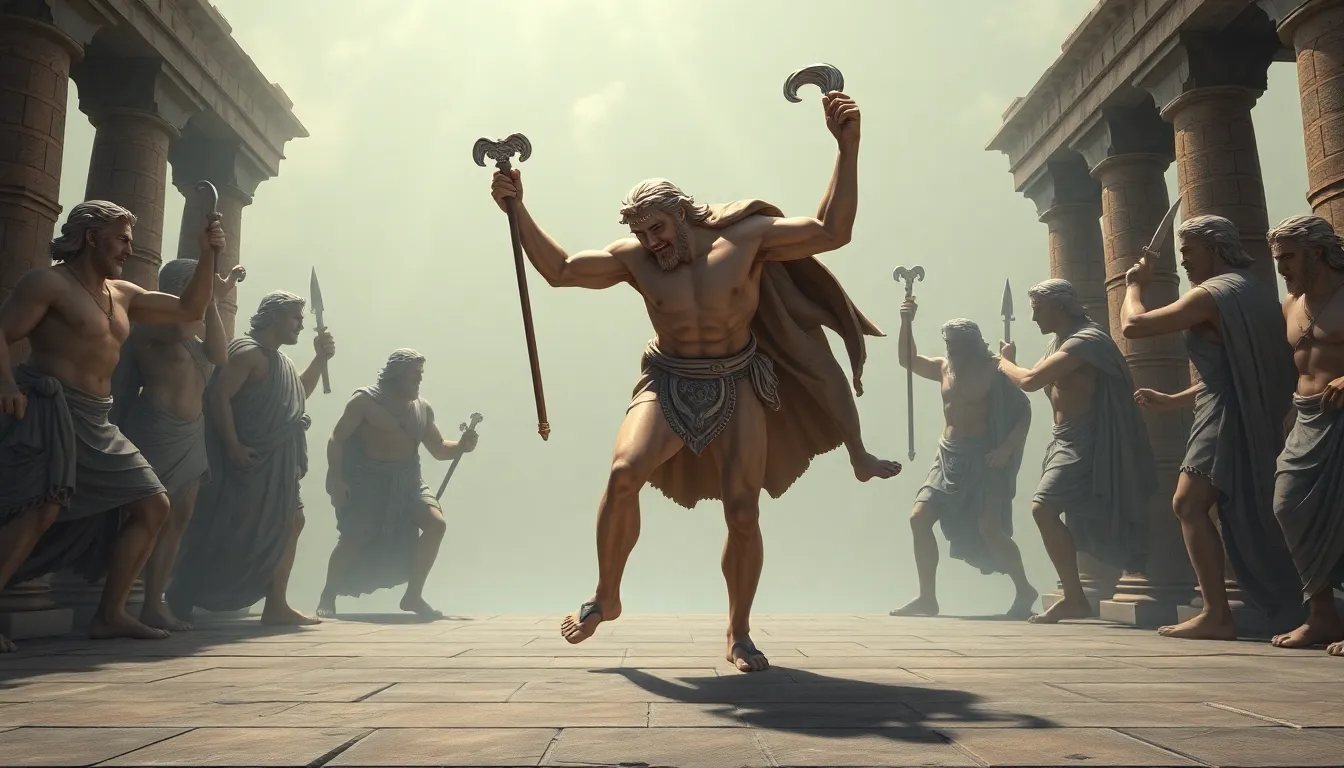The Twelve Labors of Heracles: What They Reveal About Ancient Greek Values
I. Introduction
Heracles, known to the Romans as Hercules, stands as one of the most celebrated heroes in Greek mythology. His exceptional feats and adventures have captivated audiences for centuries, representing the quintessential hero’s journey filled with trials and tribulations. Among his many exploits, the Twelve Labors of Heracles are particularly significant, showcasing not only his formidable strength but also the complex values of ancient Greek culture. This article aims to delve into the Twelve Labors of Heracles, exploring the profound values they reflect about the society in which they were conceived.
II. The Context of the Twelve Labors
The mythological background of Heracles is rich and intricate. Born as the son of Zeus and the mortal Alcmene, Heracles’ existence was marked by divine conflict from the very beginning. Hera, the wife of Zeus, harbored a deep-seated jealousy toward Heracles and sought to punish him throughout his life. This antagonism ultimately led to the tragic events that set the stage for the Twelve Labors.
After succumbing to madness—sent by Hera—Heracles unwittingly killed his wife and children. To atone for this grave sin, he sought guidance from the Oracle of Delphi, who advised him to serve King Eurystheus of Tiryns and complete a series of twelve nearly impossible tasks. These Labors, often seen as a form of divine punishment, serve as a narrative device to explore themes of struggle, redemption, and the nature of heroism.
III. The Nature of Heroism in Ancient Greece
In ancient Greek culture, heroism was defined by a combination of strength, bravery, and moral integrity. Heracles embodies the archetype of the Greek hero, demonstrating not only physical prowess but also the capacity for growth and self-improvement. His journey illustrates the balance between strength and intelligence, where sheer might is often complemented by cleverness and strategic thinking.
IV. The Importance of Strength and Endurance
The Twelve Labors are a testament to Heracles’ physical challenges, each designed to test his strength and endurance. The Labors include:
- The Nemean Lion
- The Lernaean Hydra
- The Ceryneian Hind
- The Erymanthian Boar
- The Augean Stables
- The Stymphalian Birds
- The Cretan Bull
- The Mares of Diomedes
- The Girdle of Hippolyta
- The Cattle of Geryon
- The Apples of the Hesperides
- The Capture of Cerberus
Each of these tasks requires immense physical ability, often pushing Heracles to his limits. The values of perseverance and resilience are woven throughout these Labors, showcasing Heracles as a symbol of human potential. He represents the idea that with determination, even the most daunting challenges can be overcome.
V. The Role of Intelligence and Cunning
While physical strength is a significant aspect of Heracles’ heroism, intelligence and cunning also play crucial roles in his success. For instance:
- In the case of the Lernaean Hydra, Heracles learns to use fire to prevent the regeneration of the monster’s heads.
- When confronted with the Stymphalian Birds, he employs noise to scare them into the air before shooting them down.
- For the capture of Cerberus, he relies on his wit to appease the three-headed guard of the Underworld.
This contrast between brute force and strategic thinking emphasizes the Greek value of intelligence and resourcefulness. Heracles’ triumphs illustrate that success in life often requires a combination of brawn and brains, highlighting the multifaceted nature of heroism.
VI. Themes of Sacrifice and Redemption
Throughout the Twelve Labors, Heracles experiences profound personal sacrifice. He faces physical dangers and emotional turmoil as he seeks to atone for his past actions. The concept of atonement is central to Greek culture, where the hero’s journey often involves a sacrificial element that paves the way for redemption.
Heracles’ Labors illustrate this pathway to honor and legacy. By enduring these trials, he not only seeks forgiveness but also earns a place among the stars, achieving immortality through his heroic deeds. This theme of redemption resonates deeply in Greek culture, reflecting the belief that even the most flawed individuals have the potential for greatness if they embrace their challenges and strive for improvement.
VII. The Influence of Community and Relationships
Heracles’ interactions with various characters—gods, monsters, and mortals—illustrate the importance of community and relationships in ancient Greek society. His alliances often play a pivotal role in his success:
- His friendship with Iolaus, who assists him in defeating the Hydra.
- His guidance from Athena and other gods, who provide support and wisdom.
- Collaboration with other heroes during different quests.
These relationships reflect societal values of kinship and collaboration, emphasizing that heroism is not a solitary endeavor but rather a collective effort. The importance of alliances underscores the idea that strength lies not only in individual prowess but also in community support and shared goals.
VIII. Conclusion
The Twelve Labors of Heracles reveal a rich tapestry of values inherent in ancient Greek culture. Themes of strength, endurance, intelligence, sacrifice, and community weave together to create a profound narrative about what it means to be a hero. Heracles serves as a reflection of ancient Greek ideals, embodying the complexities of heroism that resonate even today.
Through his trials, Heracles illustrates that true heroism is multifaceted, requiring not only physical might but also mental acuity and a strong moral compass. His enduring legacy continues to inspire modern interpretations of heroism, reminding us that the journey to greatness often involves overcoming significant challenges and embracing the support of others.




